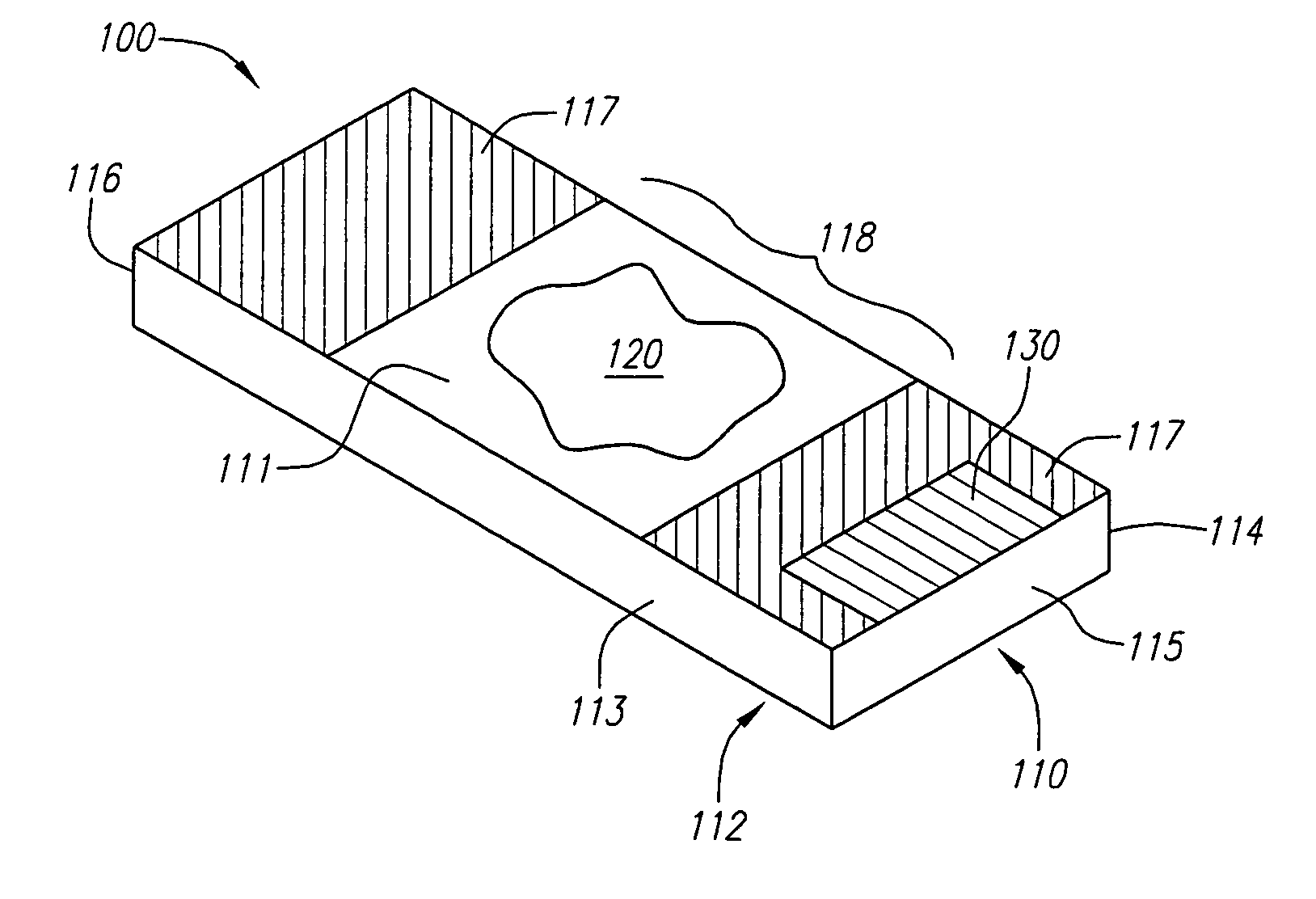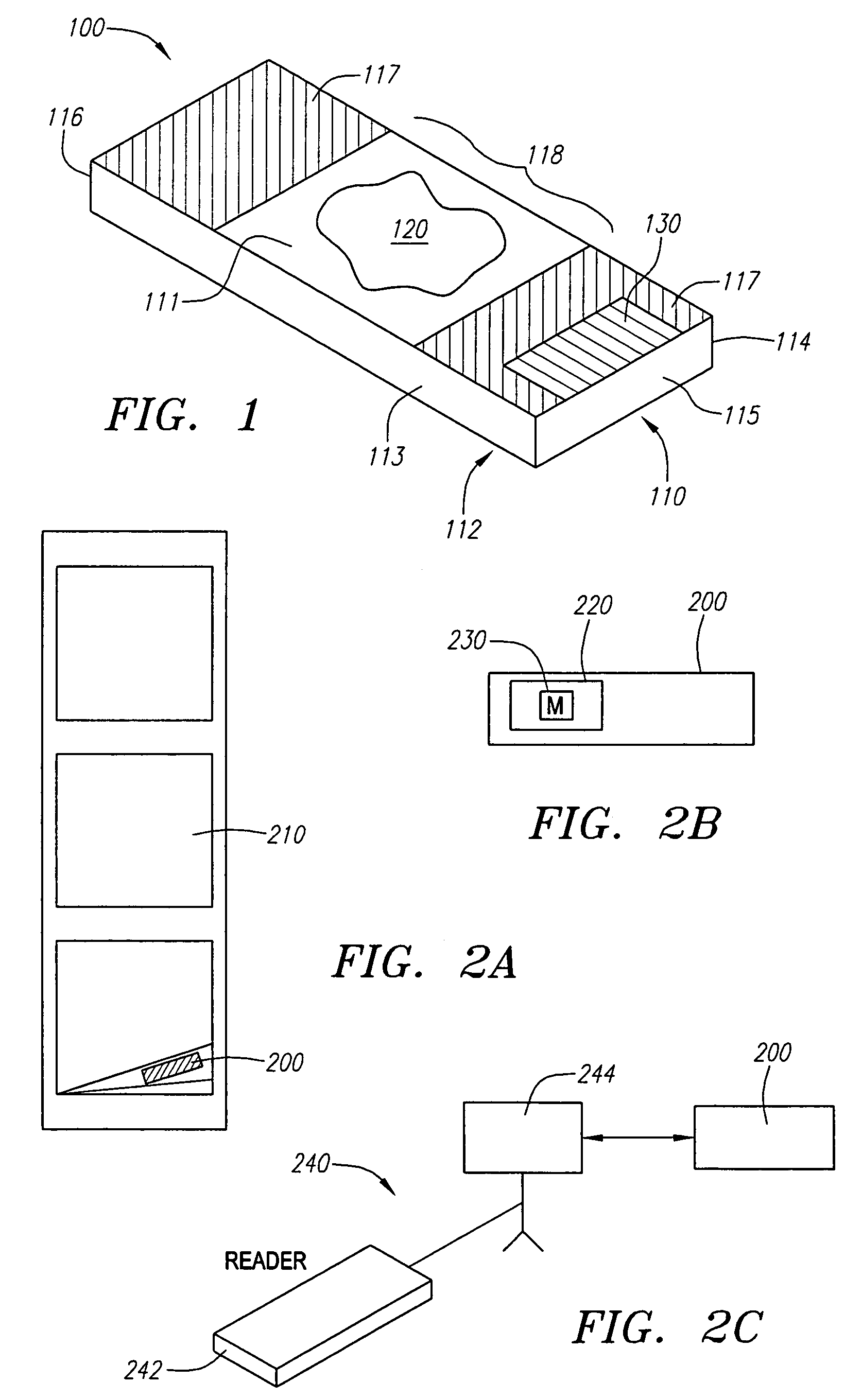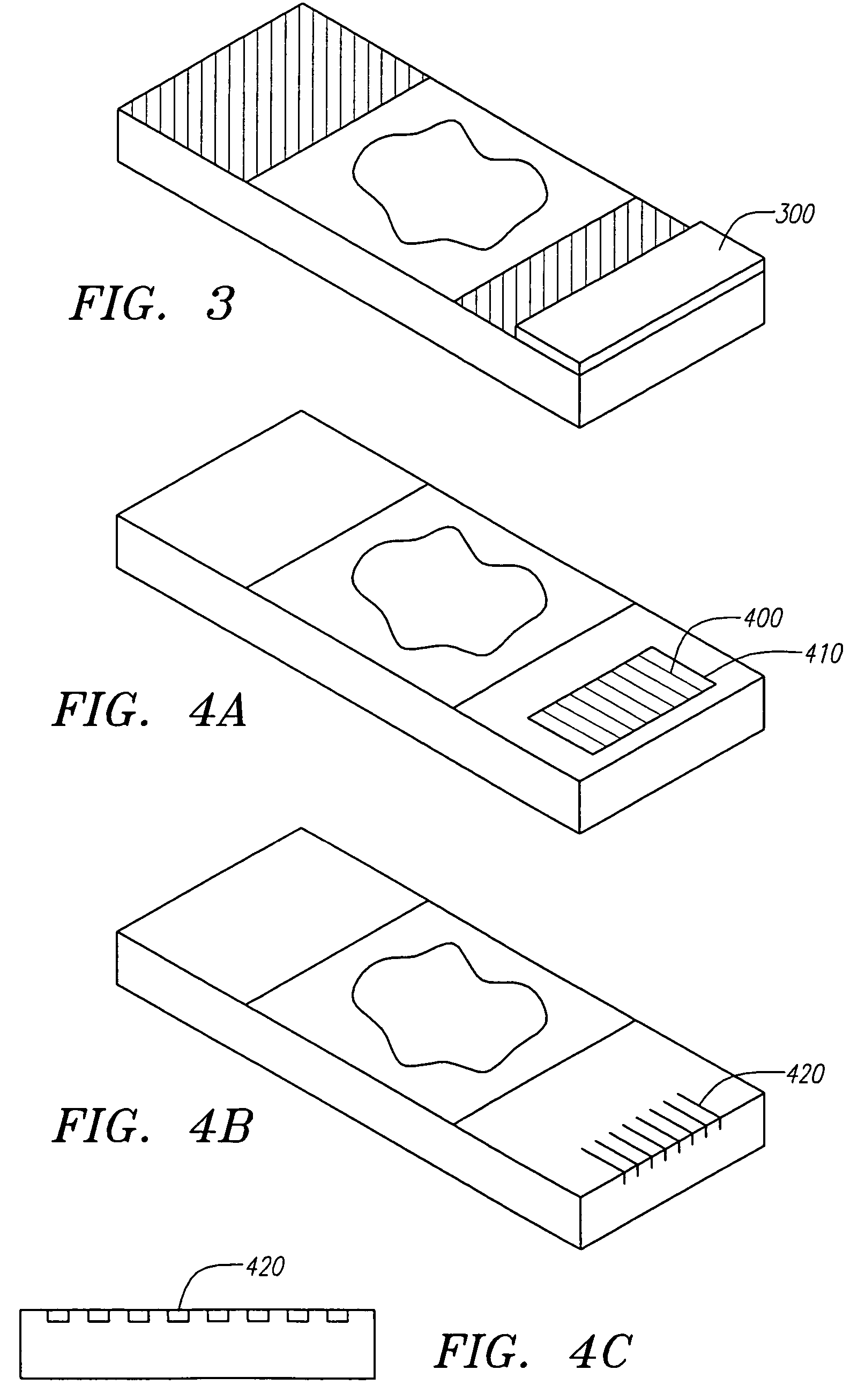Locally storing biological specimen data to a slide
a technology of biological specimens and slides, applied in the field of biological specimen analysis, can solve the problems of inconvenient and time-consuming steps, inability to overwrite or supplement existing data, and delay in specimen analysis and reporting of test results to concerned patients
- Summary
- Abstract
- Description
- Claims
- Application Information
AI Technical Summary
Benefits of technology
Problems solved by technology
Method used
Image
Examples
Embodiment Construction
[0025]Embodiments of a system and apparatus for providing necessary specimen and analysis information to a technician in an efficient manner, while eliminating the need to access such data through an external database and network, will now be described. The described system and apparatus allow for locally storing sufficient information on a biological specimen carrier to enable a technician to quickly and easily identify the sections of the specimen that warrant further analysis and allow the information on the slide to be locally updated as needed. In the following description, reference is made to the accompanying drawings, which show by way of illustration specific embodiments in which the invention may be practiced. It is to be understood that other embodiments may be utilized as various changes may be made without departing from the scope of the invention.
[0026]Referring to FIG. 1, in accordance with the one aspect of the invention, an apparatus 100 for locally storing data rel...
PUM
 Login to View More
Login to View More Abstract
Description
Claims
Application Information
 Login to View More
Login to View More - R&D
- Intellectual Property
- Life Sciences
- Materials
- Tech Scout
- Unparalleled Data Quality
- Higher Quality Content
- 60% Fewer Hallucinations
Browse by: Latest US Patents, China's latest patents, Technical Efficacy Thesaurus, Application Domain, Technology Topic, Popular Technical Reports.
© 2025 PatSnap. All rights reserved.Legal|Privacy policy|Modern Slavery Act Transparency Statement|Sitemap|About US| Contact US: help@patsnap.com



